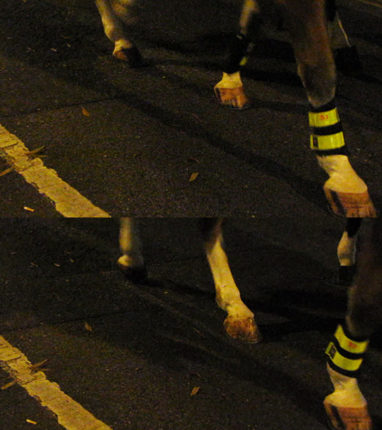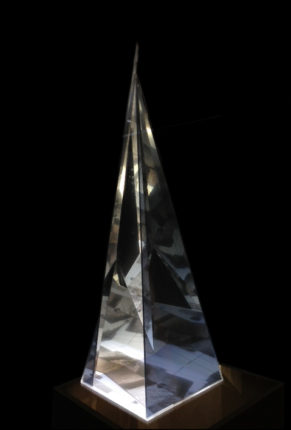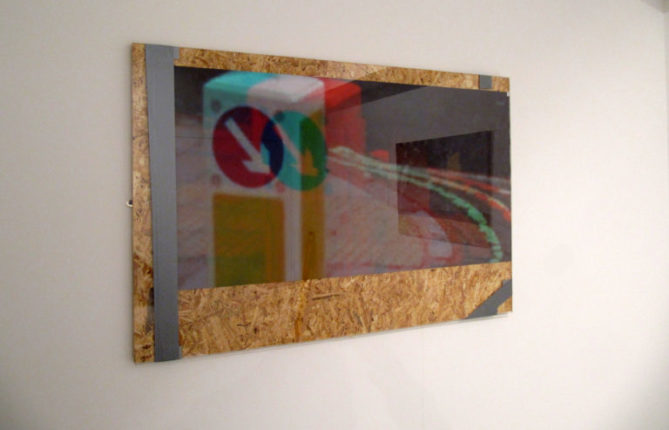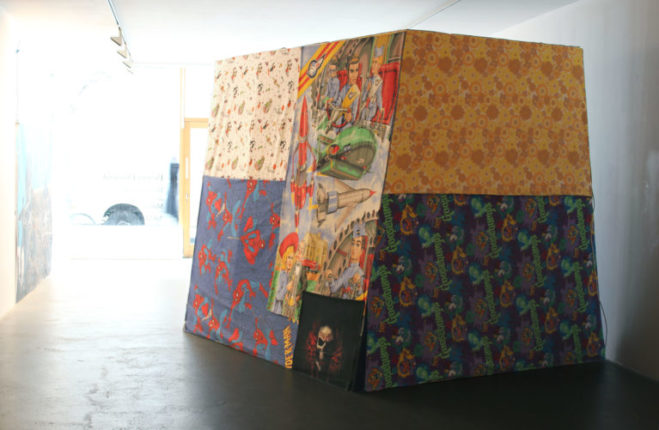Exhibition: 1st March to 6th April 2013
“For beauty is nothing but the beginning of terror which we are barely able to endure, and it amazes us so, because it serenely distains to destroy us. Every angel is terrible.”
– Rainer Maria Rilke
Maddox Arts is delighted to host Being Present, an exhibition bringing together the works of three young artists: Matthew Benington (RCA), Joe Drakeford (RCA) and Mark Dillon (Slade). Whilst working in disparate mediums to seemingly different ends, the artists are united by the overlapping themes of memory, perspective and the politics of the urban landscape.
These themes are explored in the group’s collaborative piece, Being Present, a spiralling, transhistorical text accompanied by slide presentation. This narrative provides the exhibition with its thematic backbone and leads the viewer through a labyrinthine plot whose intertextual sources range from Monty Python’s Flying Circus to T.S Eliot’s ‘Macavity: The Mystery Cat’.
In the work of Matt Benington we witness a frontiersman’s view of the Great American Landscape glimpsed with the wide-eyed, awe of childhood wonderment. The dispensable quality of the paper upon which we are offered this scene, lends the work a temporality that juxtaposes with the monumentality of the landscape, a temporality that is further sublimated by the deployment of an adventurer’s paraphernalia; bungee cords, climbing ropes and crampons- challenging the reality of the scene. Later we find the artist, delving into memory’s iconographic recesses in recreating the chrysalis of childhood fantasy, the fort, where the boundaries dividing interior and exterior worlds dissolve.
Joe Drakeford’s view of the urban landscape offers another perspective; a perspective from which postmodernism and the illusory march of progress are subversive forces, undermining our relationship to the environment and unhinging our view of the future. The illusions of perspective become the illusions of memory and in ‘Liquid Landscape’ we see the city’s skyline as a mirage where mirrored buildings become spectral hallucinations promising the viewer a depth that can never be fulfilled.
Lastly in the work of Mark Dillon we see how an exploration of the urban environment is presented as a reduced narrative, while still retaining emotional complexity. Indeed it is the scarcity of detail and context that forces us more closely to examine what content we are afforded and leaves the viewer’s interpretation to engage in the creation of the piece. In Dillon’s work we see this idea recast as we glimpse the murky content of figures and objects from places which he find’s himself engaging with his surroundings.



